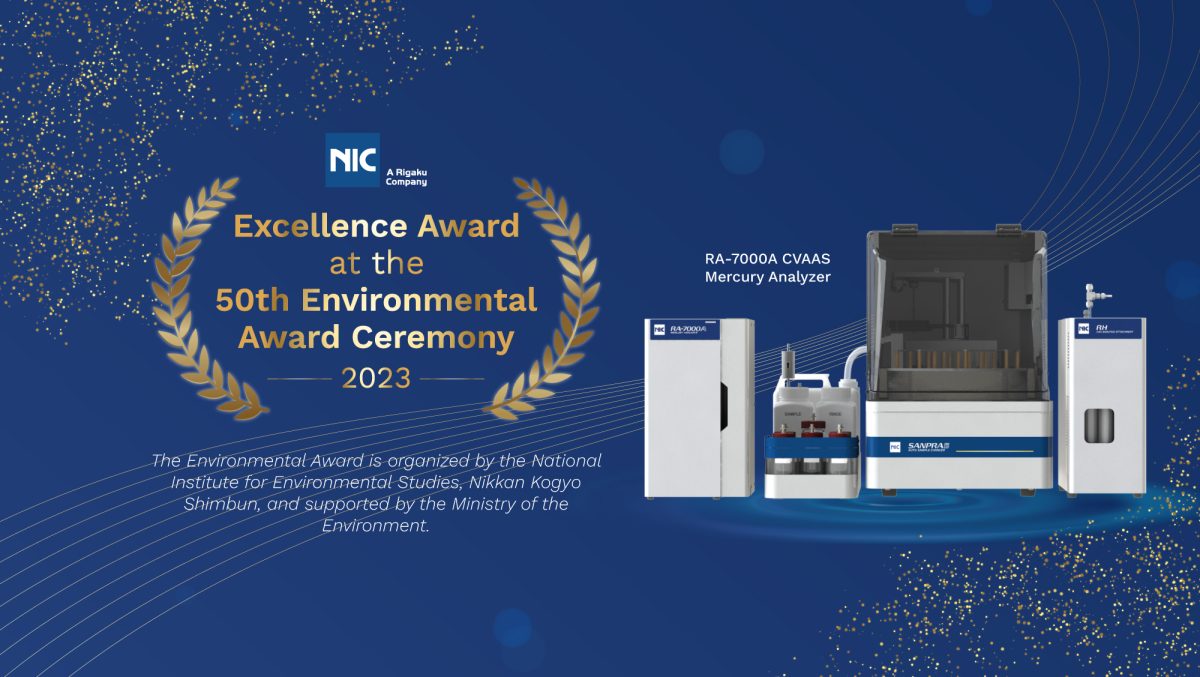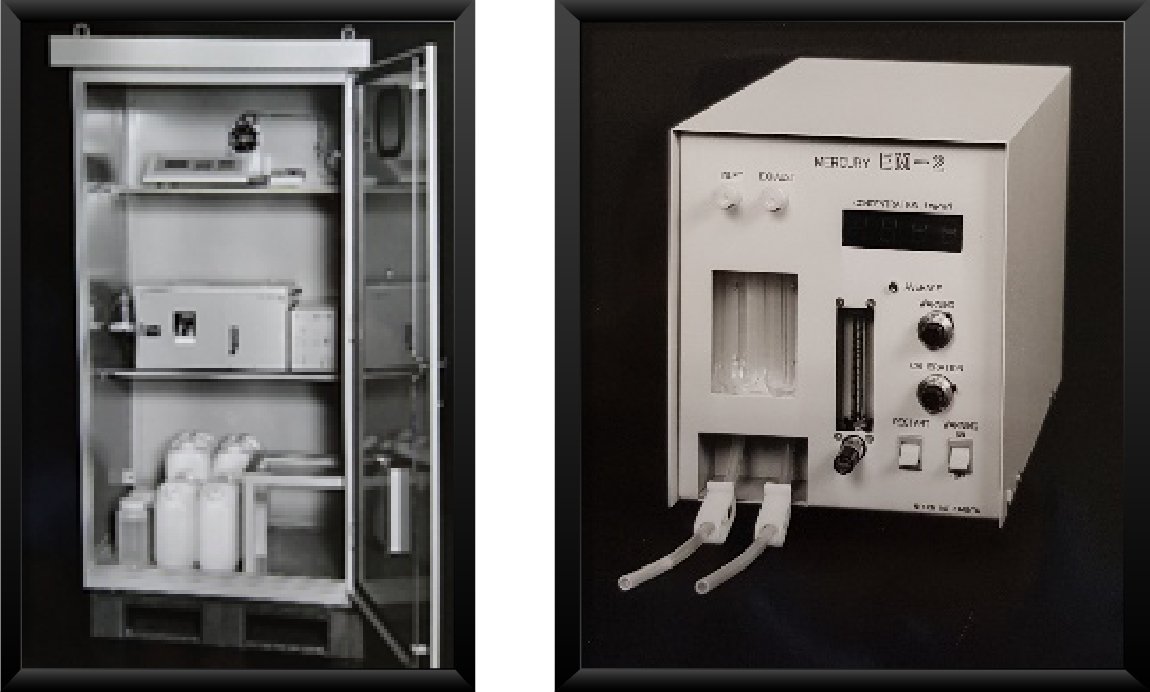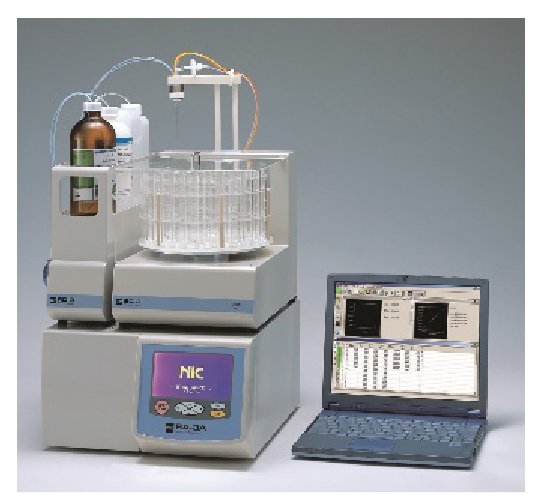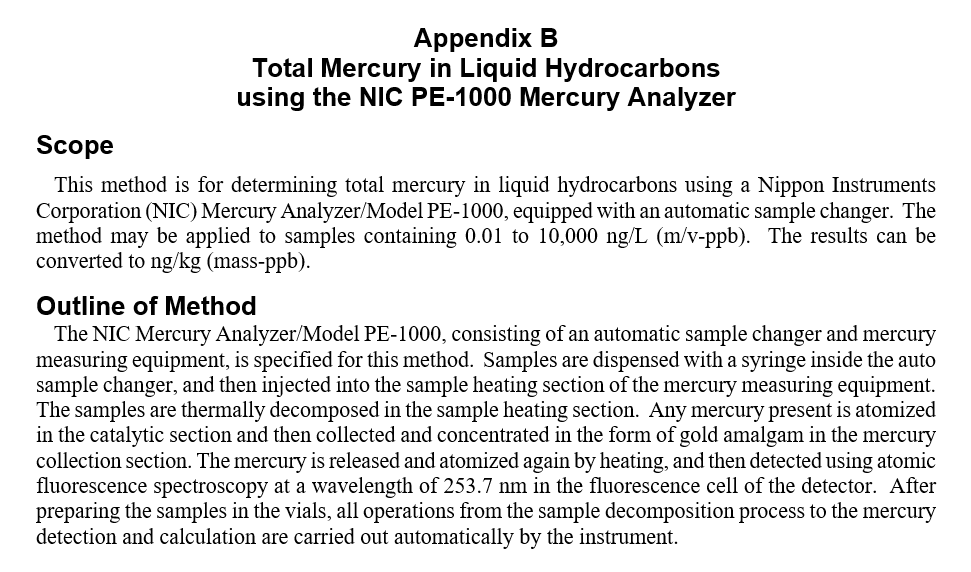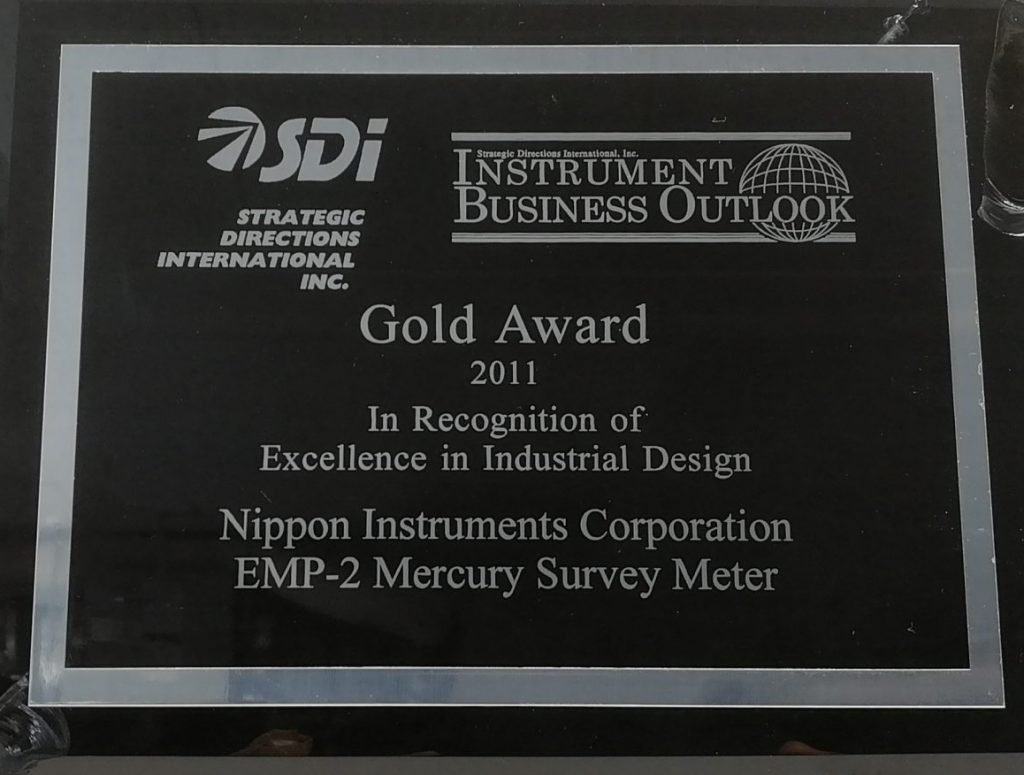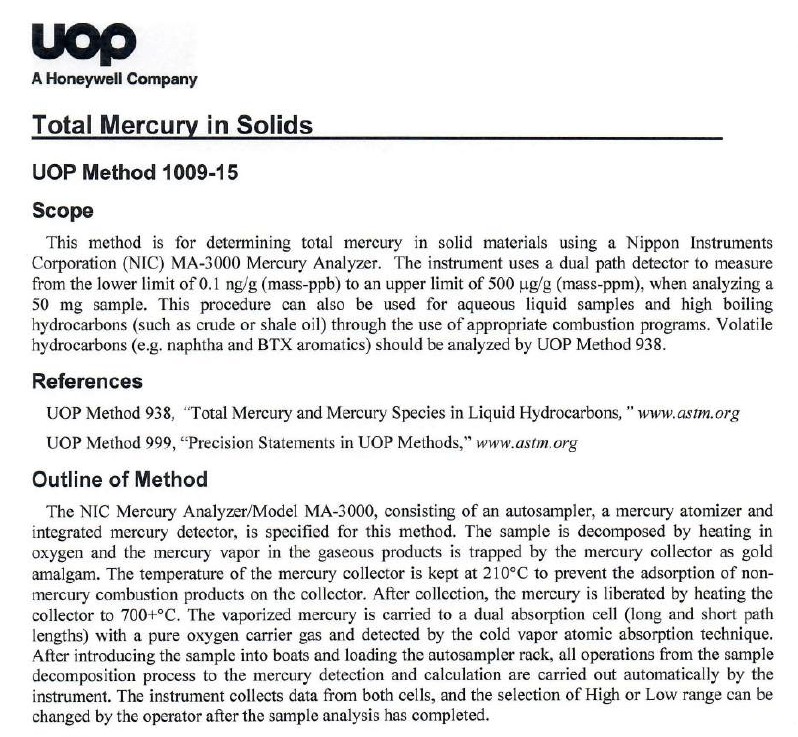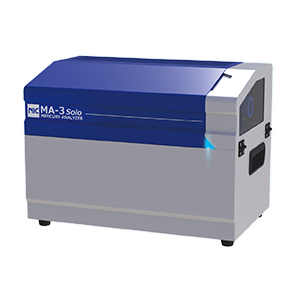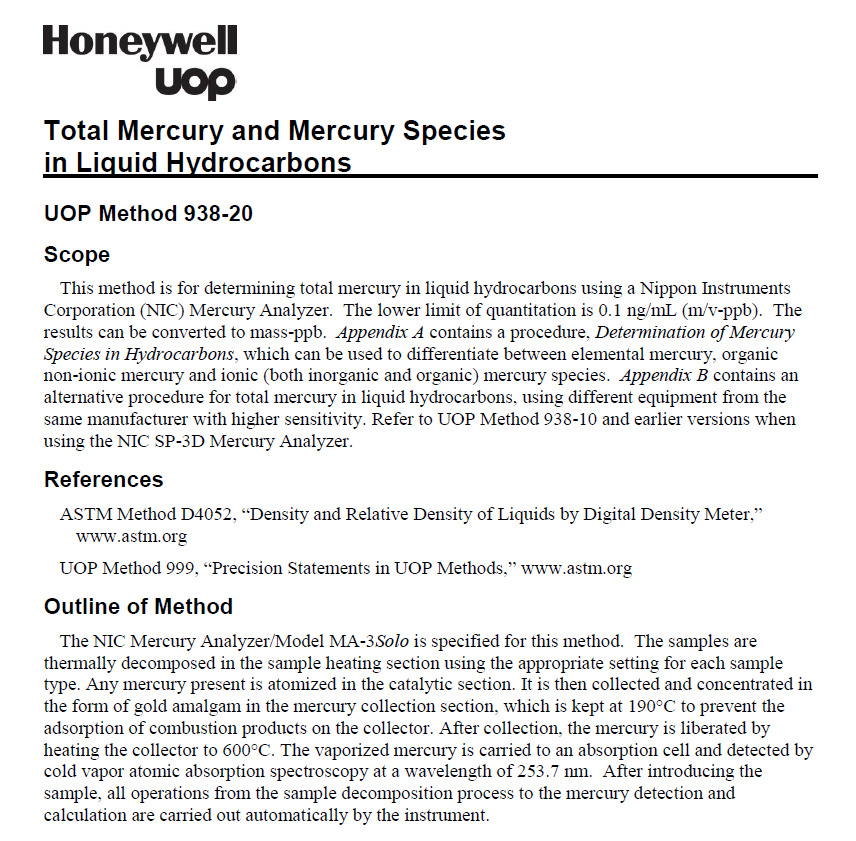NIC's Story
Pre 1978
Post-Minamata Disease Epidemic in Japan
The post Minamata disease epidemic in Japan drove the demand for mercury analysis. The thermal decomposition dual-step gold amalgamation technique was researched and studied by a team of scientists in Rigaku, successfully developing perhaps the world’s 1st thermal decomposition technique mercury analyzer, which allows direct and quick samples without the need for chemical pretreatment. The analyzer was named RIGAKU SP.
1978
NIC is born
Continual improvements on the semi-automated thermal decomposition mercury analyzer Model RIGAKU SP at that time, led to the establishment of Nippon Instruments Corporation in the year 1978 under Rigaku Corporation’s ownership, dedicated to specialize in research, development and manufacturing of mercury analyzers to serve and support the scientific world on mercury analysis.
SP-2
2nd Generation of SP Series – Model SP-2 was commercialized and sold

1982 – 1985
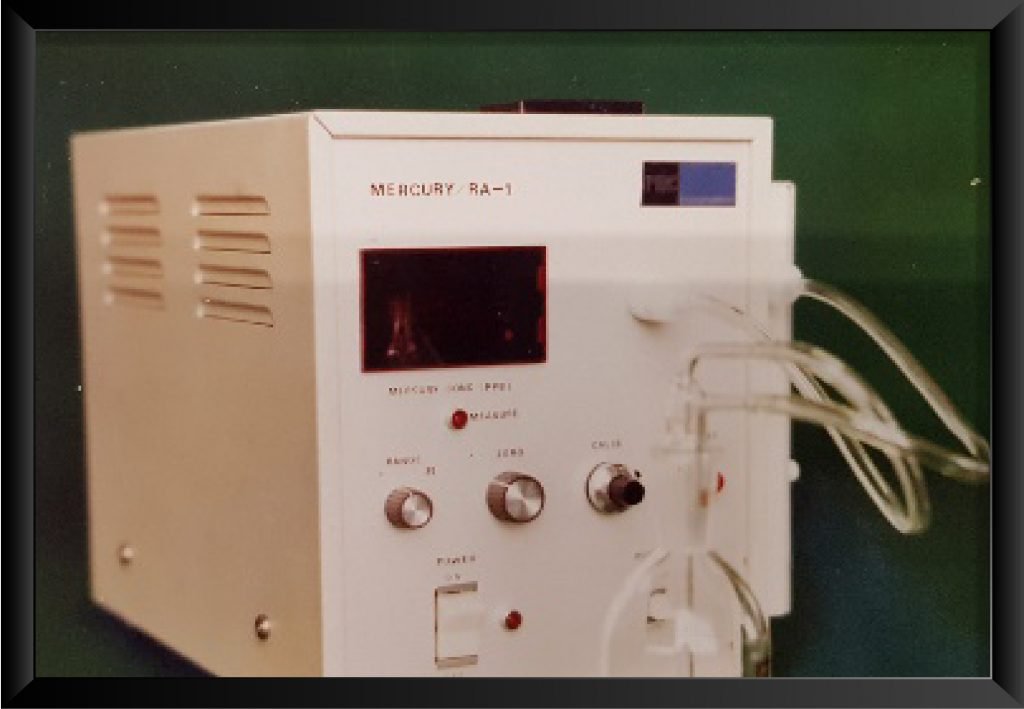
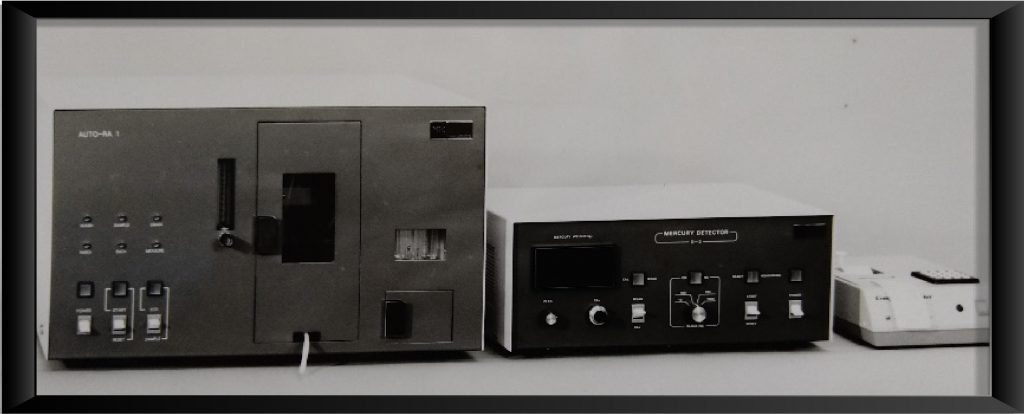
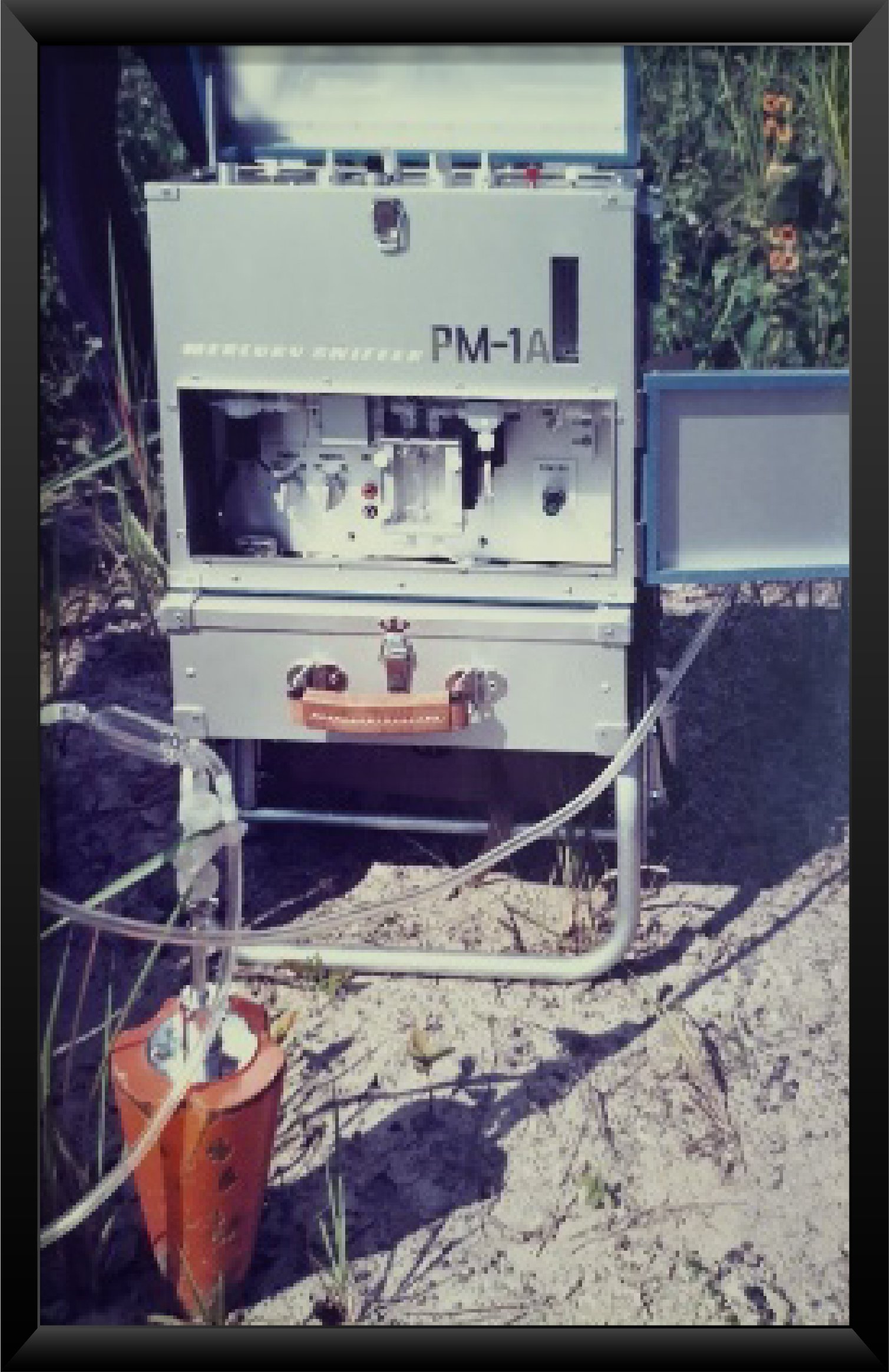
New Product(s) Launched (From left to right)
- RA-series bench-top discrete direct-purge reducing vaporization mercury analyzer
- ARA-series online mercury monitor in water/wastewater
- PM-series battery-operated field-portable gold-amalgamation mercury analyzer in gas
1986
An active year of outdoor research
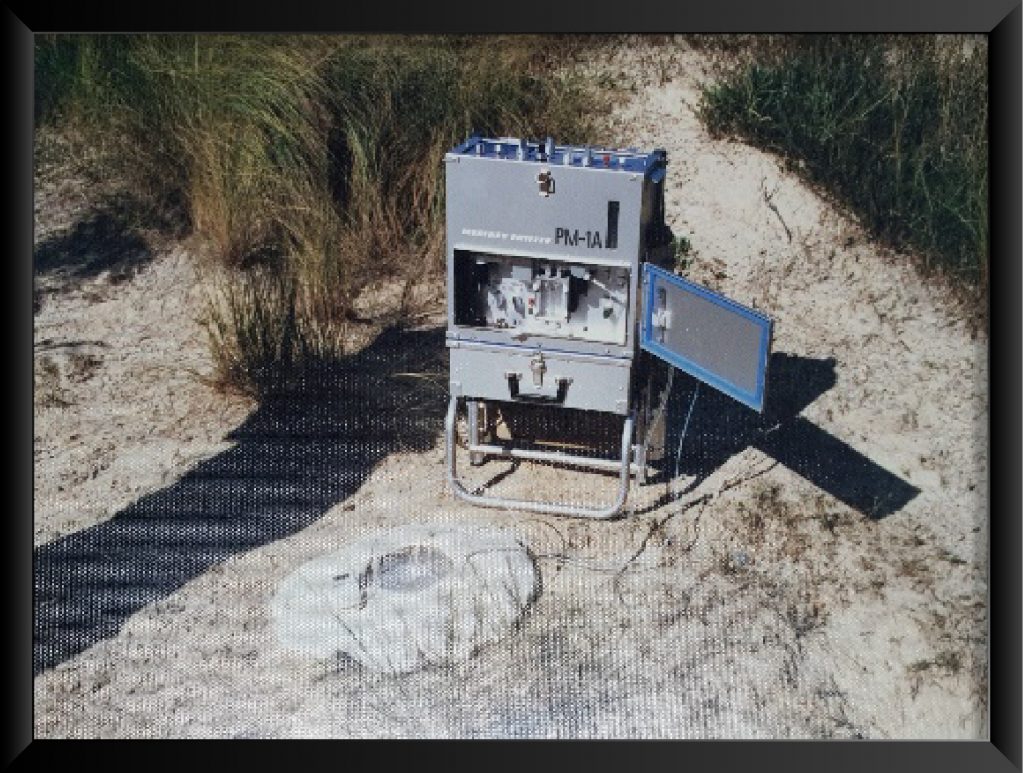

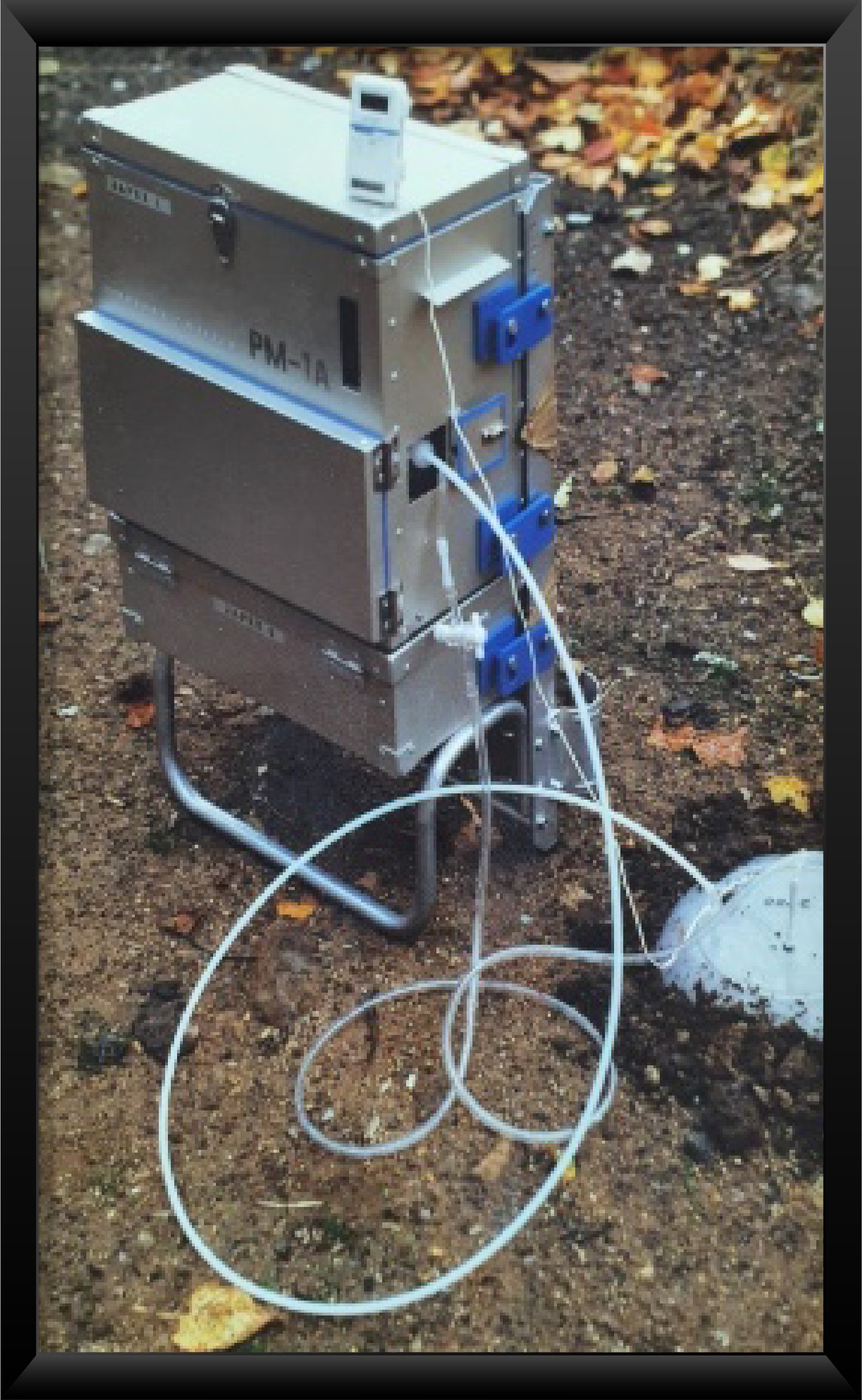
Soil Gas Analysis in Tohoku, Japan
PM-1A used in the field for measurements of mercury in soil gas to investigate for possible geo-thermal sites – Tohoku region, Japan, 1986.
PM-1A is also the predecessor of EMP-Gold+ that was redesigned and launched in 2017.
Research in the Steaming City of Japan
Beppu, Japan
PM-1A in action in Kyushu University, Beppu City, Oita, Japan in 1986.
Beppu (別府) is one of Japan’s most famous hot spring resorts, producing more hot spring (Onsen) water than any other resort in the country. In the city alone, there are more than 2,000 hot springs. It is also termed as the “Steaming City”.
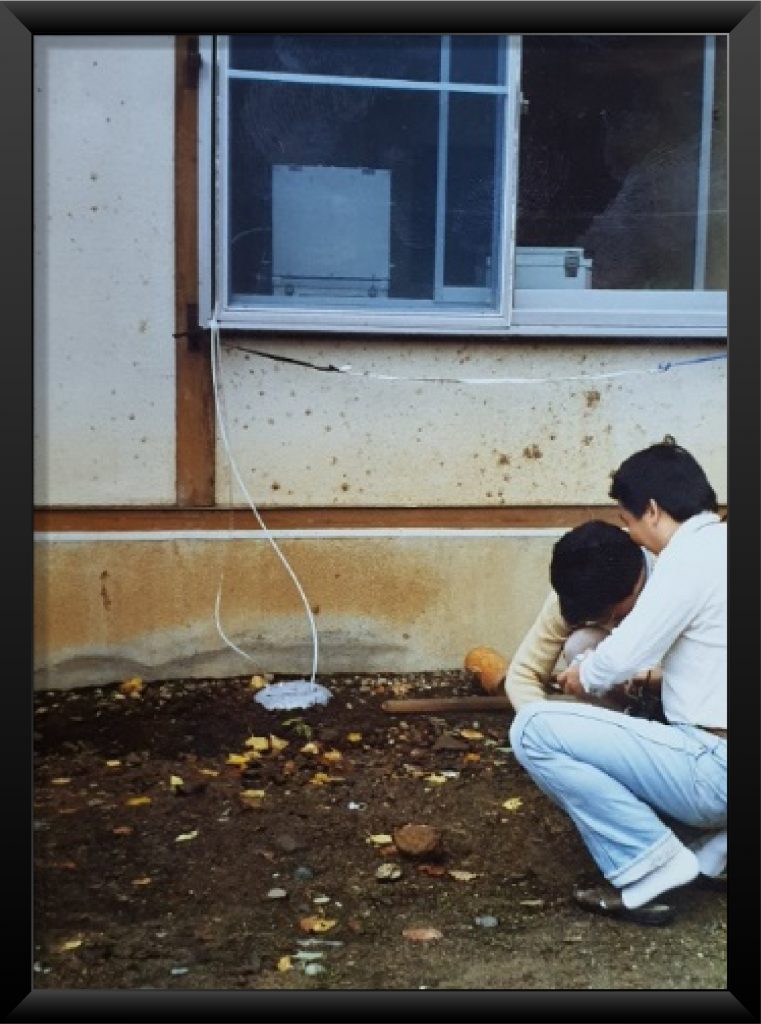
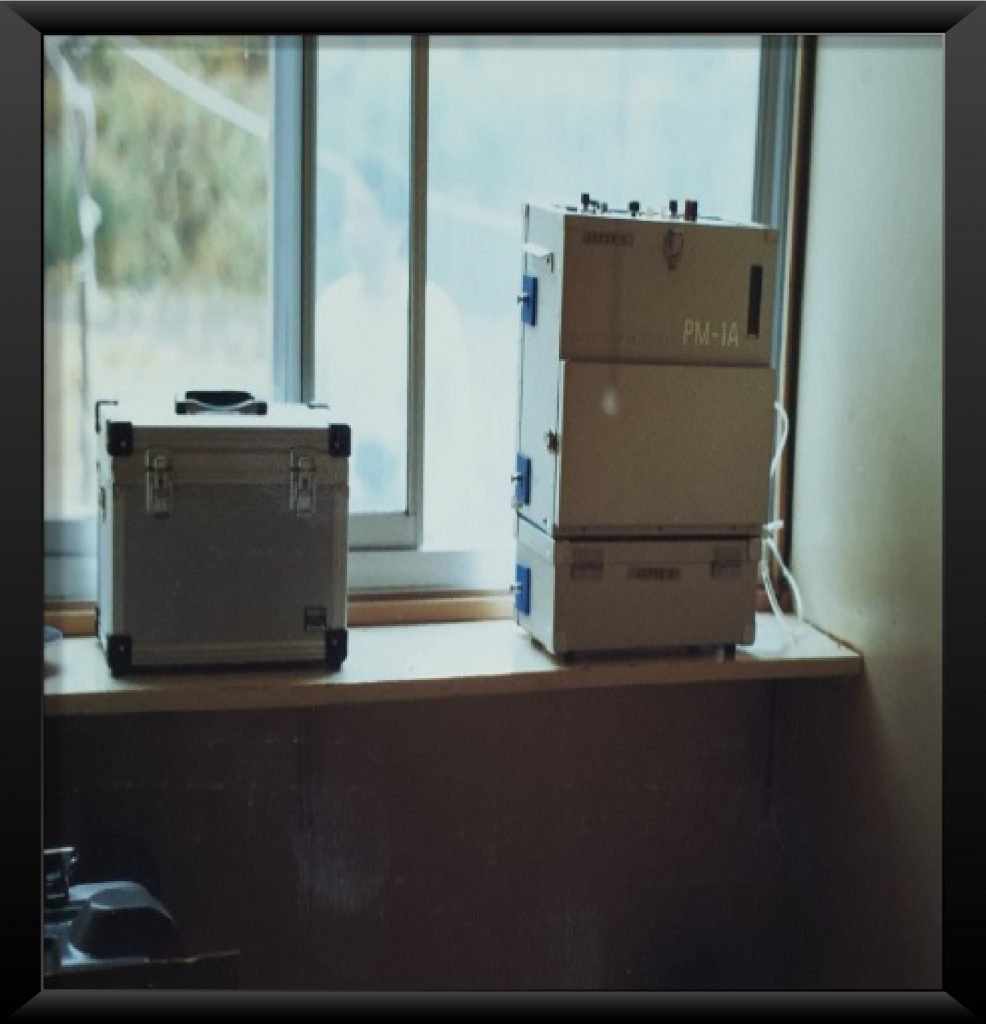
“It is through non-stop researching and field trips that our company’s technology is able to grow tremendously.”
Working with customers to know and learn their needs and satisfaction.
PM-1 and improved PM-1A (more compact and lighter) in action in Tohoku region, Japan, 1986.
Robust through the silent night
Its robustness made field measurement possible.
Both PM-1 and PM-1A actively collecting mercury in soil gas data – even working through the night.
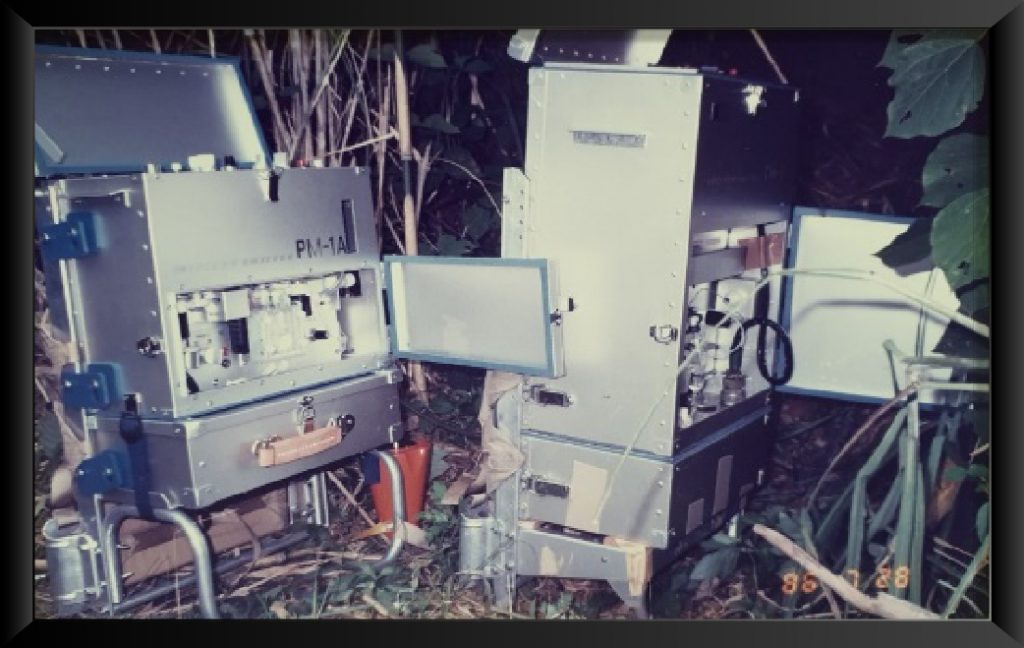
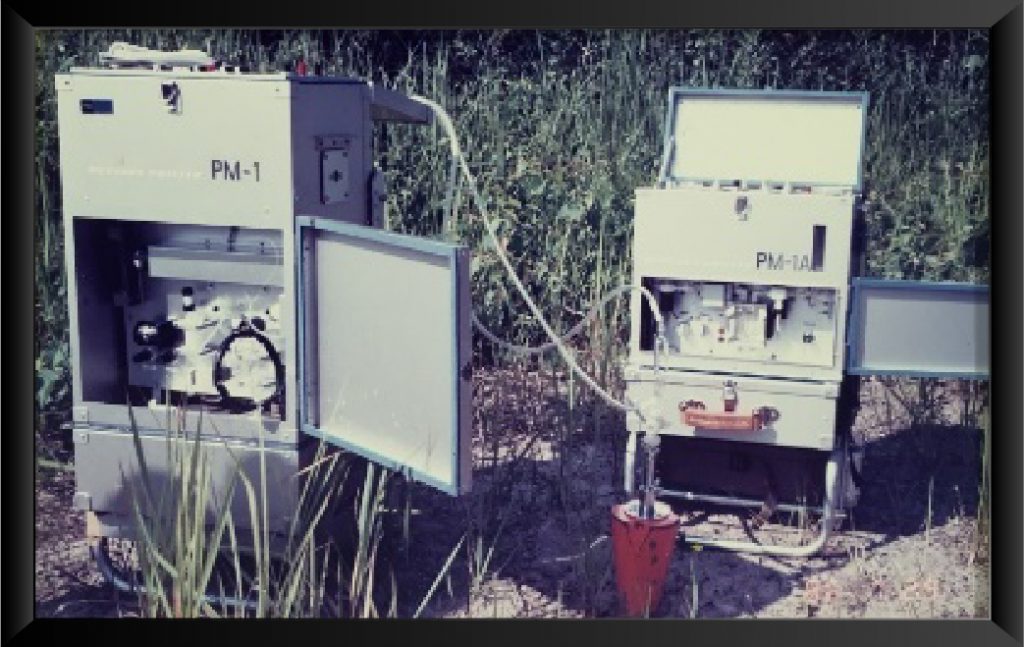
PM-1A in action, Hokkaido, Japan
PM-1A in action in Hokkaido, Japan, 1986. With the portability of PM-1A, measurements of mercury in the nature were made possible at that period.
Ultra-trace level since 1986
Portability is such a big part in trace level mercury field measurement.
Battery powered gold-amalgamation mercury analyzer. We did it since 1986.
1988
The World’s First Mercury Analyzer for Cold-Cathode Fluorescent Lamp (CCFL)
About Cold-Cathode Fluorescent Lamp (CCFL)

Cold Cathode Fluorescent Lamps (CCFL) are backlights which work very much like the traditional fluorescent lamp installed and used in all Liquid Crystal Display (LCD) panels. They come in a single straight or shaped glass tube. Inside of the tube has low-pressure mercury vapor. Once ionized, it emits ultraviolet light. The content levels of mercury in crucial in determining the display quality and the lifetime.
With the surge in demand for this high-quality and performance LCDs in consumer electronics in the 1980s to 1990s, Model TM-series was developed in conjunction with the main CCFL manufacturers to meet their quality control requirement for backlight productions, replacing the convention tedious and time-consuming wet-chemistry process. The compact bench-top heat vaporization mercury analyzer for cold-cathode fluorescent lamp (CCFL) was introduced.

Introduction of battery-operated hand-held mercury survey meter, EMP Series
Successful research is through hard work, perseverance, learning, sacrifice, and most of all, loving of what we are doing or learning to do.
– Koji Tanida
The “Astronaut”
in Mount Mihara
There will always be trace levels of mercury released near the volcanic area. NIC scientist, Koji Tanida, backpacked with PM-1A, walking up towards the crater of an active volcano that erupted one year ago, setting up to monitor mercury levels in the emitting volcano gases Mount Mihara, Izu Island, 1988.
1990
New Product(s) Launched:
SP-3D

Introduction of Fully-Automated 3rd generation of SP – Model SP-3D
MA-1

Introduction of bench-top thermal decomposition single gold-amalgamation mercury analyzer, MA-series.
AM-series

Introduction of AM-series bench-top continuous gold-amalgamation AAS mercury analyzer in air/gas
RA-2

Introduction of 2nd-generation RA-series with 20-positions autosampler
1991 - 1992

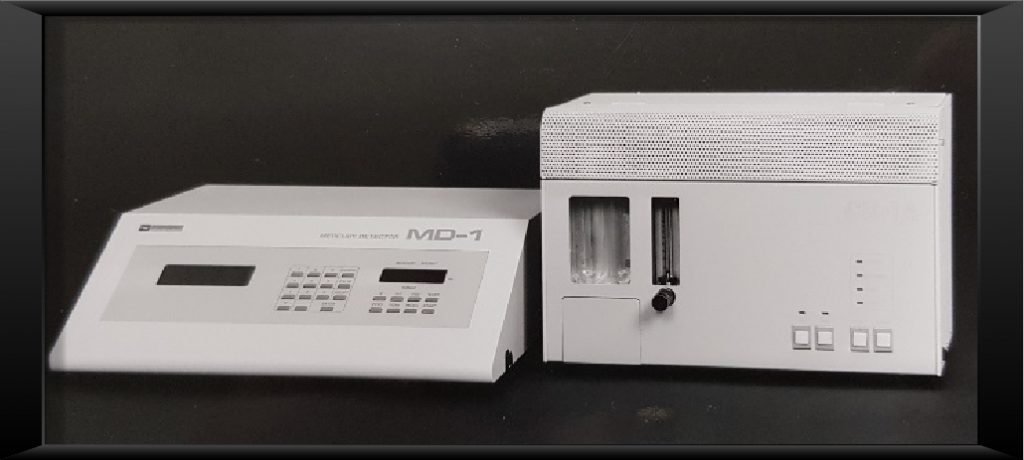
New Product(s) Launched (From left to right)
- PM Series – Model PM-2, new generation battery-operated field-portable gold-amalgamation mercury analyzer in gas
- WA Series – Model WA-3, new bench-top gold amalgamation mercury analyzer for gas
1996
The Amazon Experience
Gold Rush
Era in the 19th Century
– The Amazon, the world’s largest tropical rainforest, famed for its biodiversity. It is crisscrossed by thousands of rivers, including the powerful Amazon. Other than ecology, the Amazon also has numerous minerals and precious metals deposits, including Gold. The gold rush has uncontrollably invited artisanal and small-scale gold mining (ASGM) operators who use mercury in their process, which is now the primary cause of mercury pollution in the Amazonian aquatic ecosystem.
Amazon basin, Brazil 1996
PM-2 was strapped onto the hot air balloon to do air sampling at different attitudes, investigating mercury distribution outgassing from mercury polluted ASGM sites in the Amazon basin of Brazil, 1996.
The journey to the measuring site takes more than 45 hours of flight journey (transfers and transits) with more than 18 hours of boat journey up the mighty Amazon river – indeed a true River Safari.
In addition, there were a lot of logistics arrangements involved as the mission needed more than 10 bottles of Helium gas to inflate the balloon to lift the PM-2 into the atmosphere.
All the sacrifices needed for the research.
1999 – 2000
Our Product was officially certified for UOP and IFP method
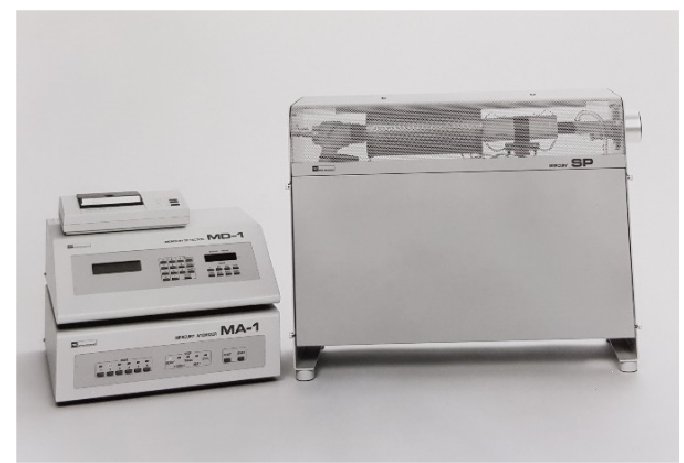
SP-3D certified for UOP 938-00
Model SP-3D re-validated for measurements of total mercury in Naphtha and other liquid hydrocarbon matrices
SP-3D certified for
IFP 9606
Model SP-3D successfully validated by the Institute of French Petroleum (IFP) and adopt under method IFP 9606 for determination of total mercury in liquid hydrocarbons
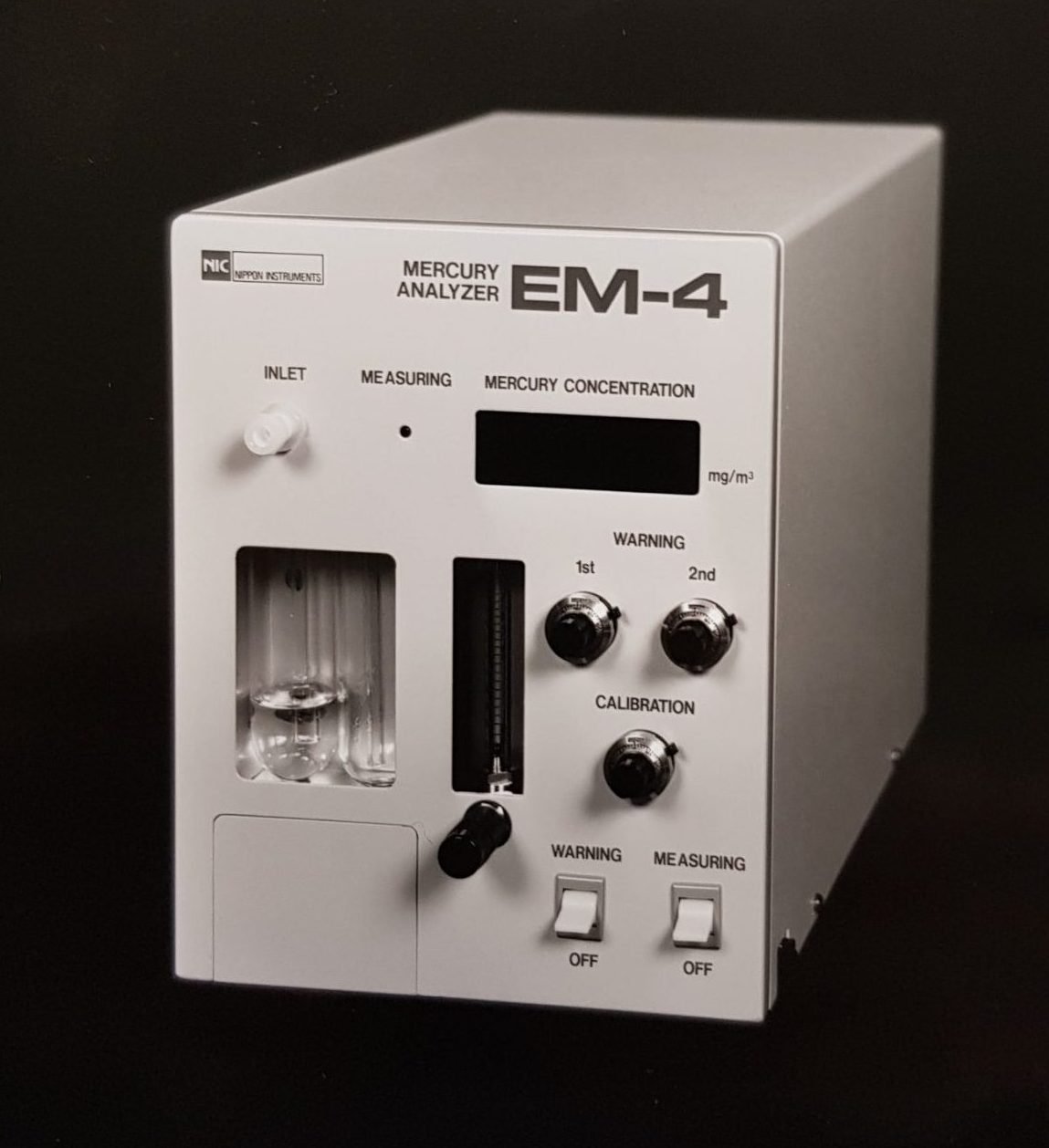
Introduction of new generation bench-top mercury monitor in workplace air, EM-4
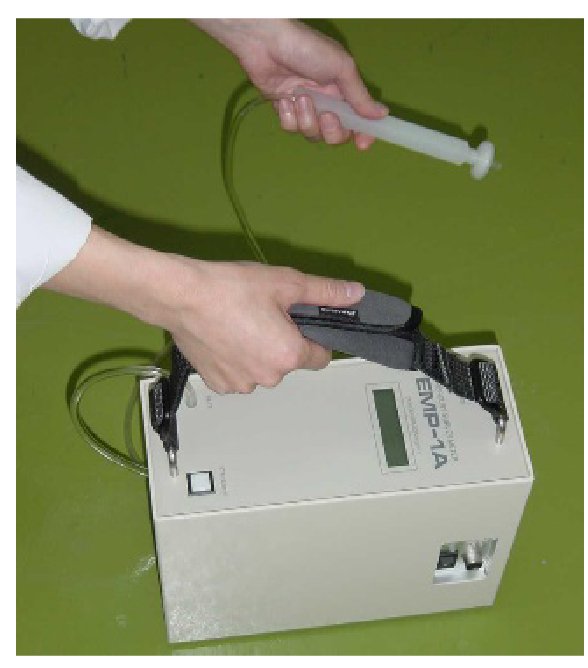
1
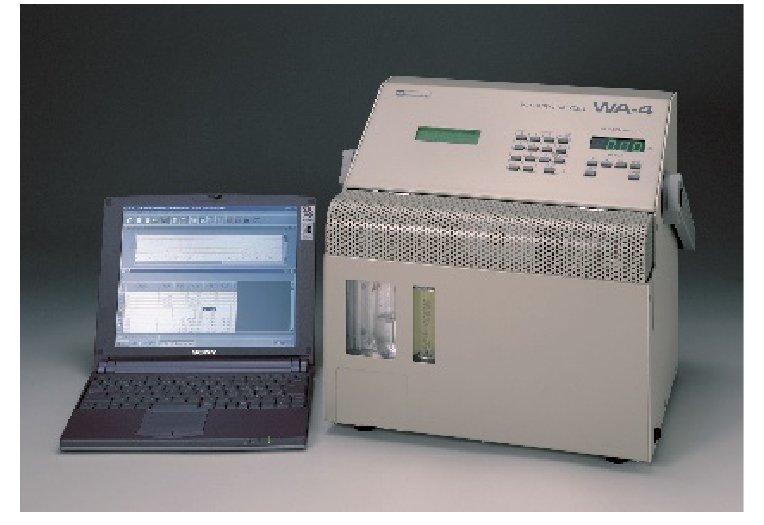
2
1
Introduction of improved version battery-operated hand-held mercury survey meter, EMP-1A
2
Introduction of new compact bench-top gold amalgamation mercury analyzer for gas, WA-4
2002
First SP-3D installation in Canada in Ottawa University
The installation was supported by Koji Tanida, one of the founding members in NIC. The heat of thermal decomposition furnace helped to keep us warm in the freezing winter of Ottawa.

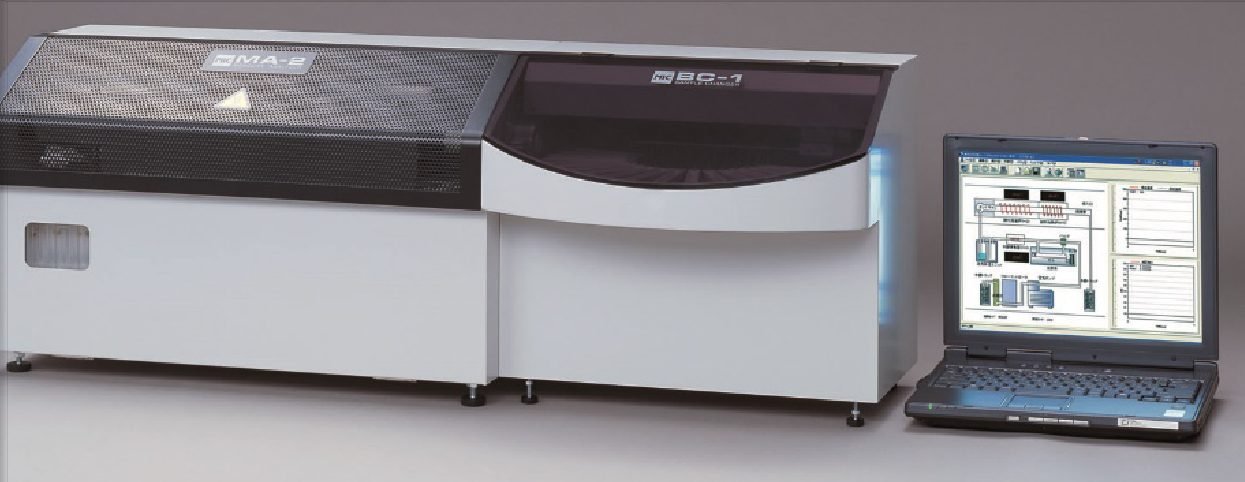
1
MA-2000
Introduction of 2nd generation of Direct Mercury Analyzer MA-Series with 40-position Boat-Driven Sampler Changer
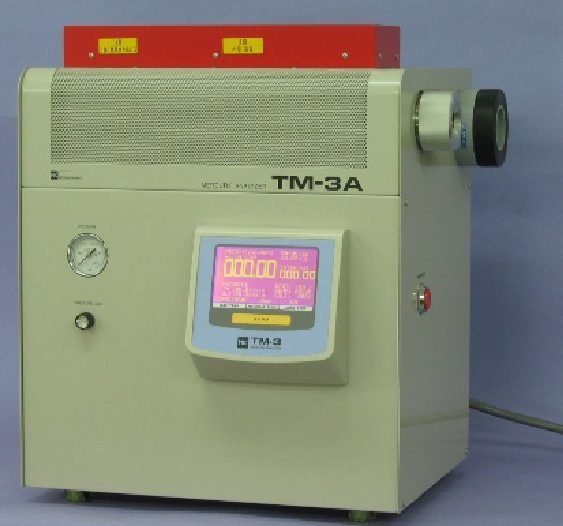
2
TM-3A
Introduction of new generation bench-top heat vaporization mercury analyzer for cold-cathode fluorescent lamp (CCFL)
2005-2006
Introduction of The World’s First in-situ auto-digestion reducing vaporization mercury analyzer – Model RA-3420
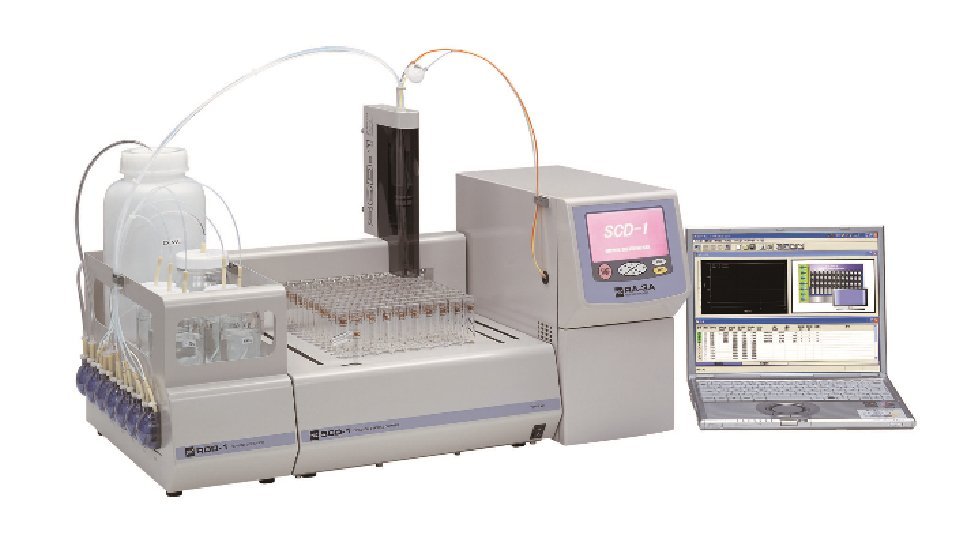
1
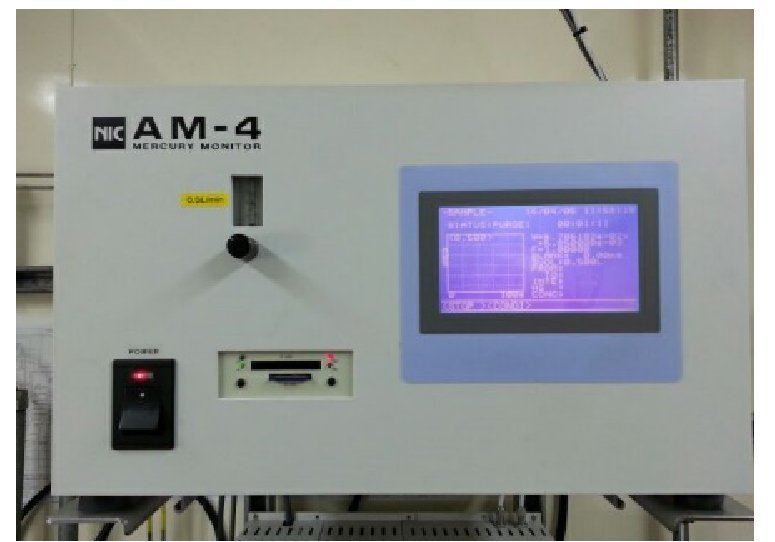
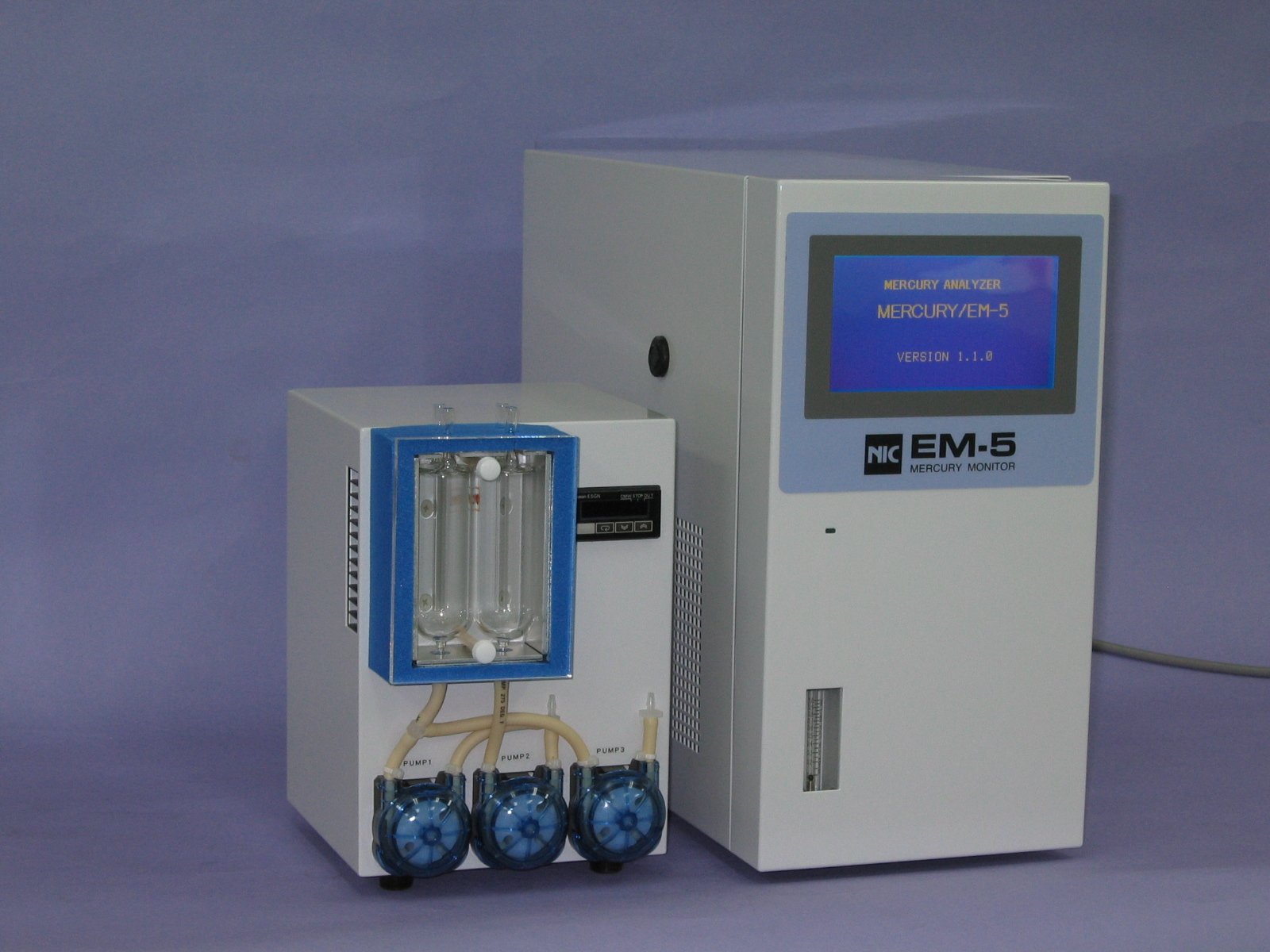
2
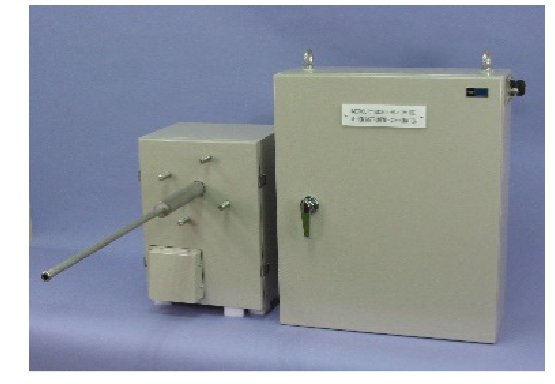
3
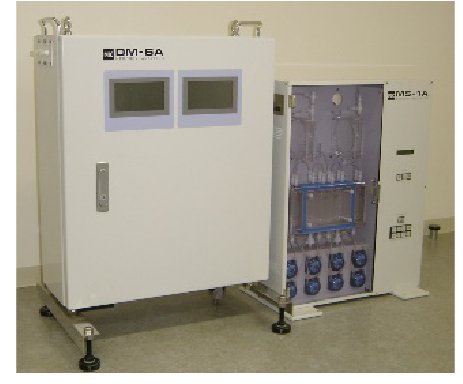
4
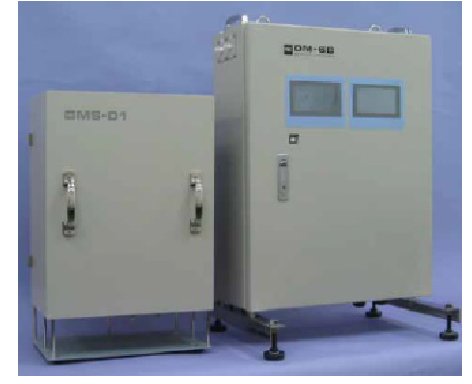
5
Other New Products Launched:
- Model AM-4 (Photo 1)– New bench-top continuous gold-amalgamation AAS mercury analyzer in gaseous matrices
- Model EM-5 (Photo 2) – Improved and expanded application bench-top mercury monitor in workplace and other gases
- DM Series (Photo 3 – 5) – New series of mercury analyzer for continuous emission
2009
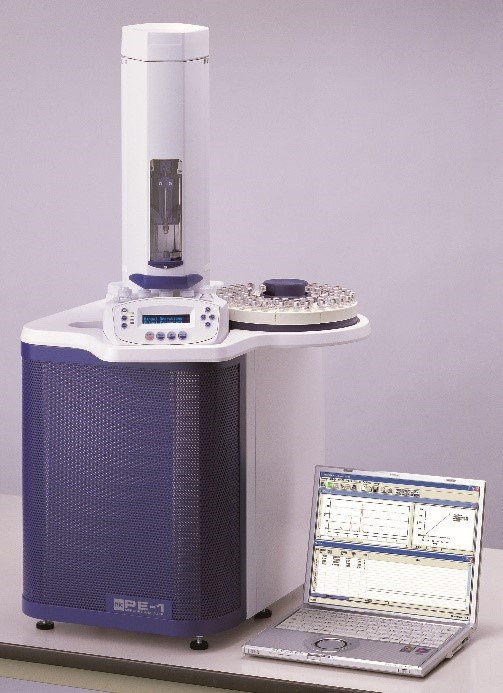
1
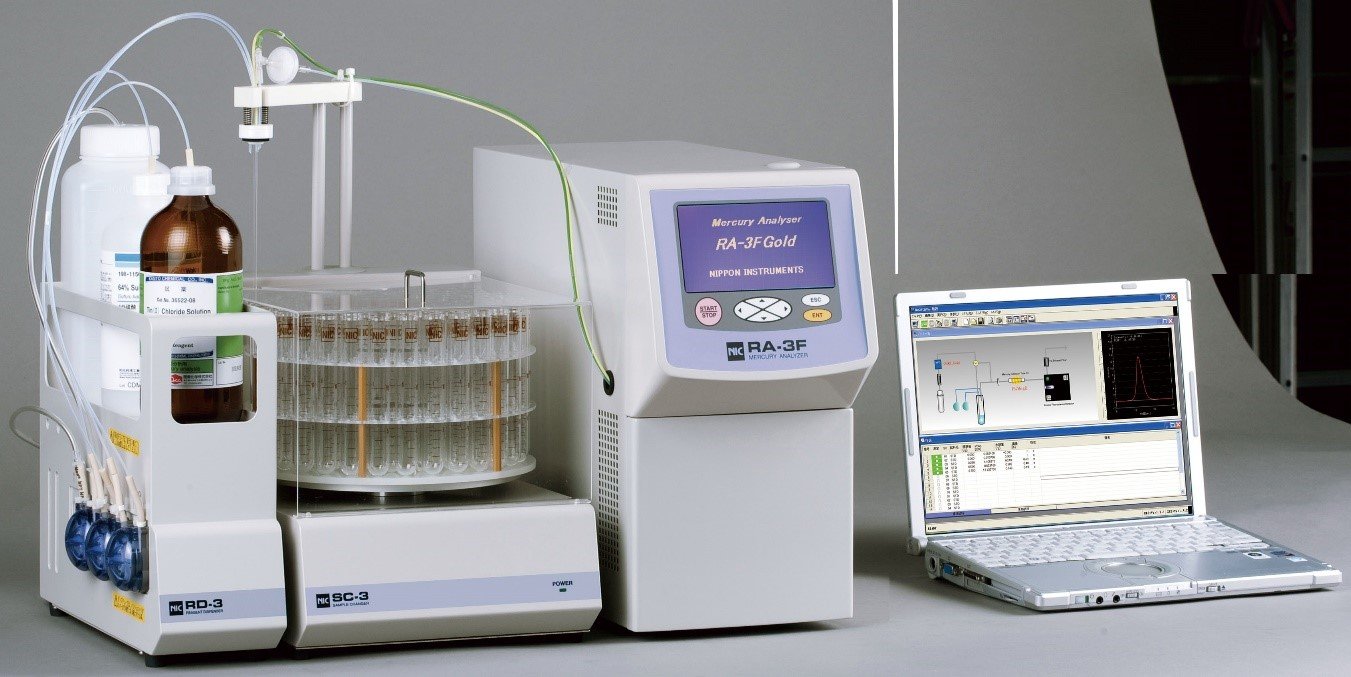
2
New Product(s) Launched (From left to right)
1. Model PE-1000 (Photo 1) – Brand new series, fully automated Petro-Pyrolysis Atomic Fluorescence (AFS) Mercury Analyzer
2. Model RA-3320FG+ (Photo 2) – Atomic Fluorescence (AFS) Mercury Analyzer under the RA-series for ultra-trace level of mercury analysis
2010
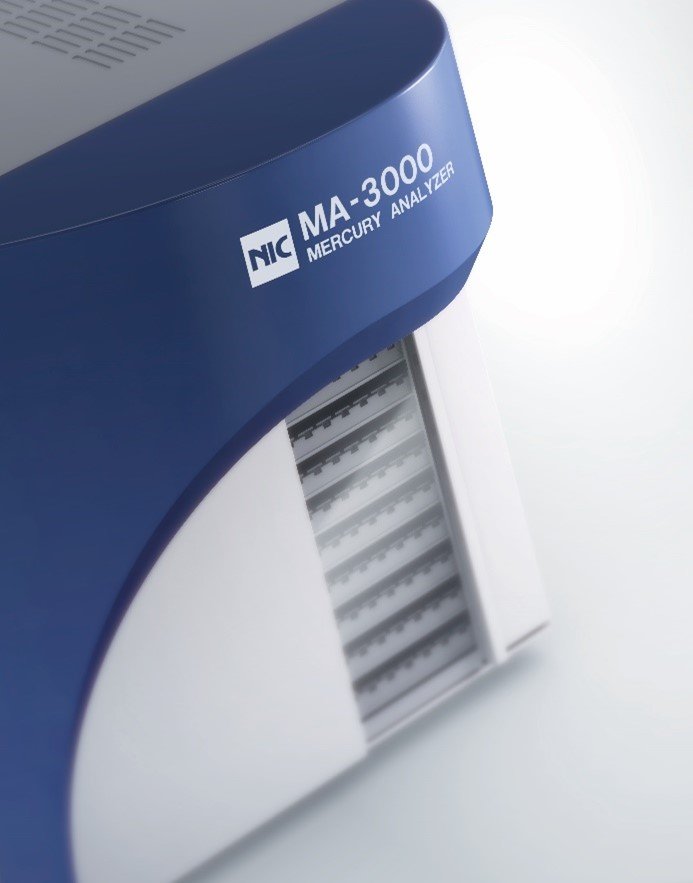
1
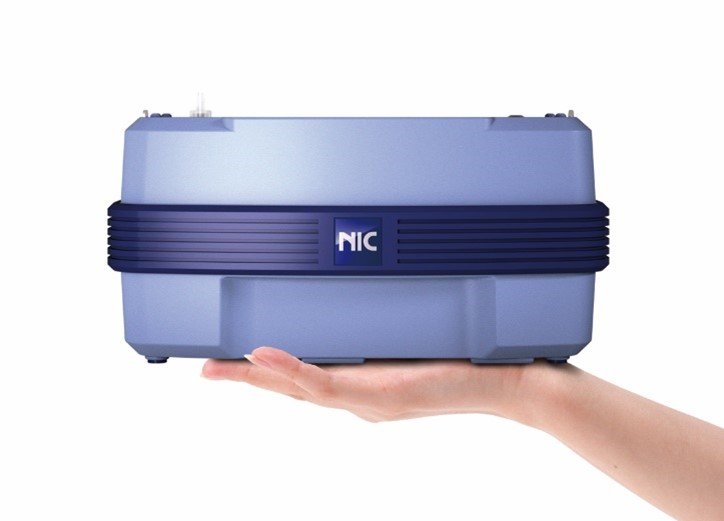

3
2
New Product(s) Launched (From left to right)
1. 3rd generation MA Series (Photo 1) – High Throughout MA-3000 Direct Mercury Analyzer with integrated 100 positions boat changer
2. Model EMP-2 (Photo 2 & 3) – 2nd generation of EMP-series with a brand new design concept of portable mercury survey meter, equipped with touchscreen for operation.
2011 - 2012
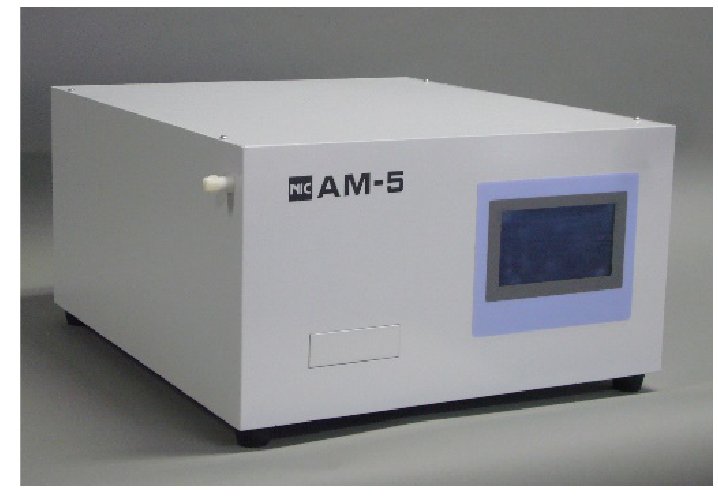
1
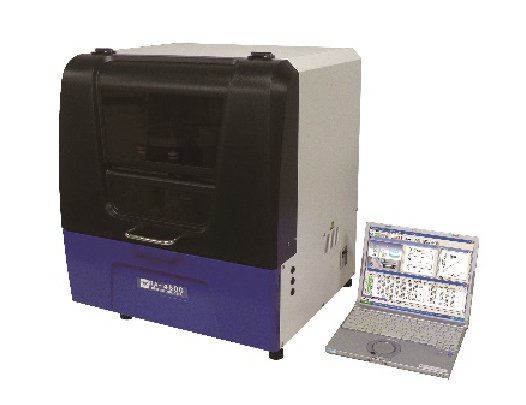
2
New Product(s) Launched
- Model AM-5 (Photo 1) – New bench-top continuous gold-amalgamation AFS mercury analyzer in air
- RA-4000A-series (Photo 2) – Brand new concept cabinet design bench-top in-situ acid digestion reducing mercury analyzer with AAS detector
2013
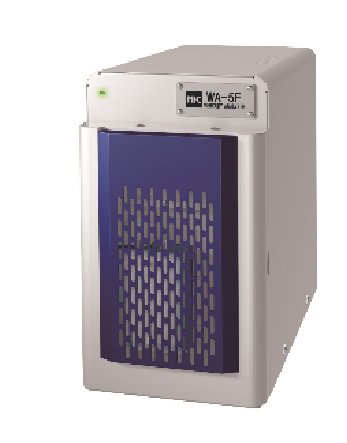
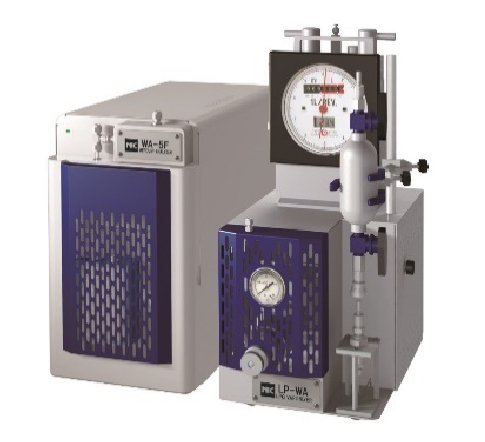
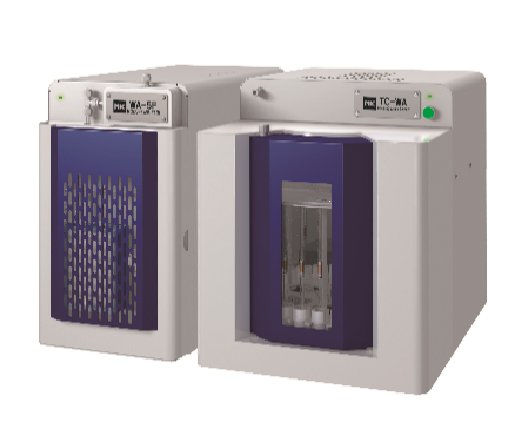
New Product Launched:
WA-5-series
A new bench-top mercury analyzer for gas with choice of AAS or AFS detector
Hair Analysis Service Offered by NIC in Minamata Disease Archives, Minamata City, Kumamoto Prefecture, Japan

It was a collaboration to assist to the National Institute of Minamata Disease (NIMD) during the Minamata Treaty conference in October 2013 where global diplomats and visitors convened in Kumamoto (Japan) to sign the treaty. A field trip was organized to bring all the visitors to Minamata city and the museum to see the “birthplace of Minamata disease”.
Hair analysis was organized for visitors who are interested and curious to know their mercury content. In total, 8 units of NIC MA-3000 were deployed for this event, with NIC staffs helping as either analysts or hair sampling/collection.Most importantly, wanting to give all visitors a wonderful experience for their visit to Minamata and the exceptional hospitality of the Japanese culture, country and people.
2014 - 2015
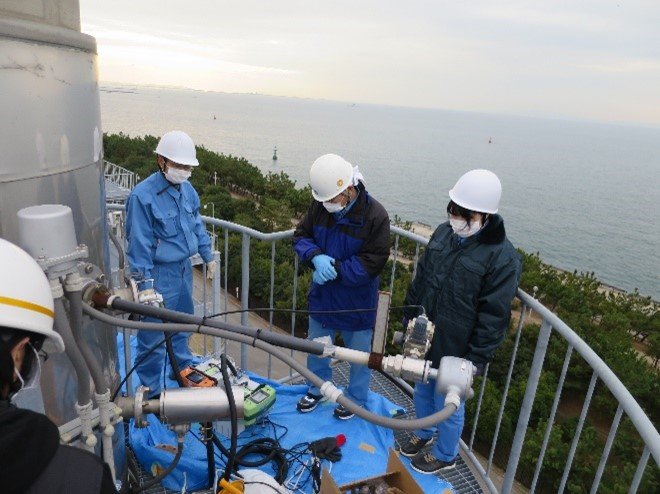
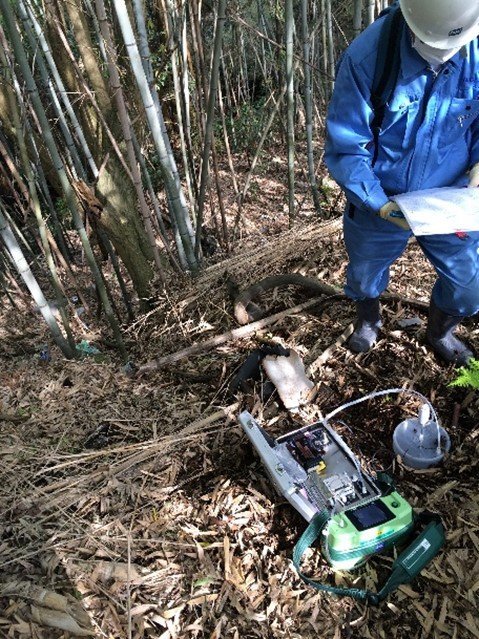
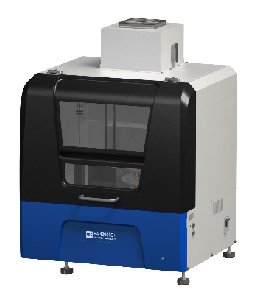
1
2
3

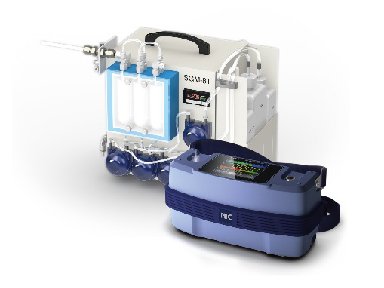
4
References:
Outdoor Research Projects:
Photo 1 – Mercury measurement from incinerator emission together with Kyoto University using SGM-8
Photo 2 – Geothermal energy prospecting in Aso, Kumamoto, Japan using EMP-Gold+ together with National Institute of Advanced Industrial Science and Technology (AIST).
New Product(s) Launched
Photo 3 – RA-4000FG+, a new bench-top mercury analyzer with AFS detector, satisfying US EPA1631e.
Photo 4 – Model SGM-8, a versatile field portable real-time flue gas emission monitor
2016

1
References:
2
Outdoor Research/Project:
Photo 1 – Mercury measurement at a landfill in Kyoto, Japan using
Model EMP-Gold+
New Product Launched
Photo 2 – RA-5 Series, new modular concept bench-top reducing vaporization
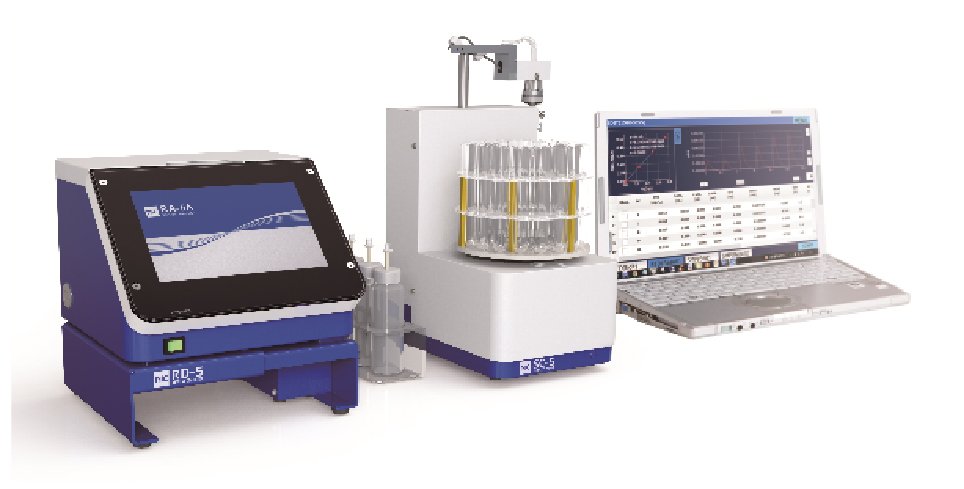
2017
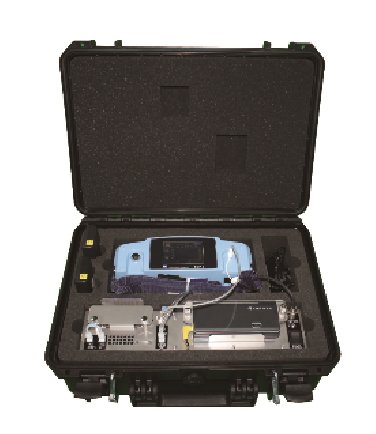
New product launched:
EMP-Gold+
Introduction of compact field portable battery-operated gold-amalgamation mercury in gas monitor

2018
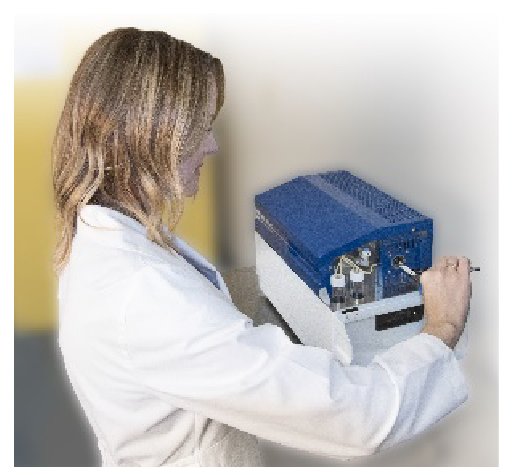

1
2
References:
MA-3 Solo – Can be used anywhere, anytime
Photo (1) – In 2018, MA-3 Solo was introduced as compact single-load direct thermal decomposition mercury analyzer.
Photo (2) showed the outdoor operation of MA-3 Solo in a temple compound in Thailand. As there is a staying “Desperate Times Call for Desperate Measures”.
This happened to perform an urgent analysis. Our colleague borrowed a plug point in a temple compound and start checking the measurements. Results were obtained within an hour. It is an indeed a versatile system that you can count on.
- JIS K0222 -1997 Methods for Determination of Mercury in Stack Gas extended to include Procedure 3 – Continuous Measuring Method (NIC SGM-technique)
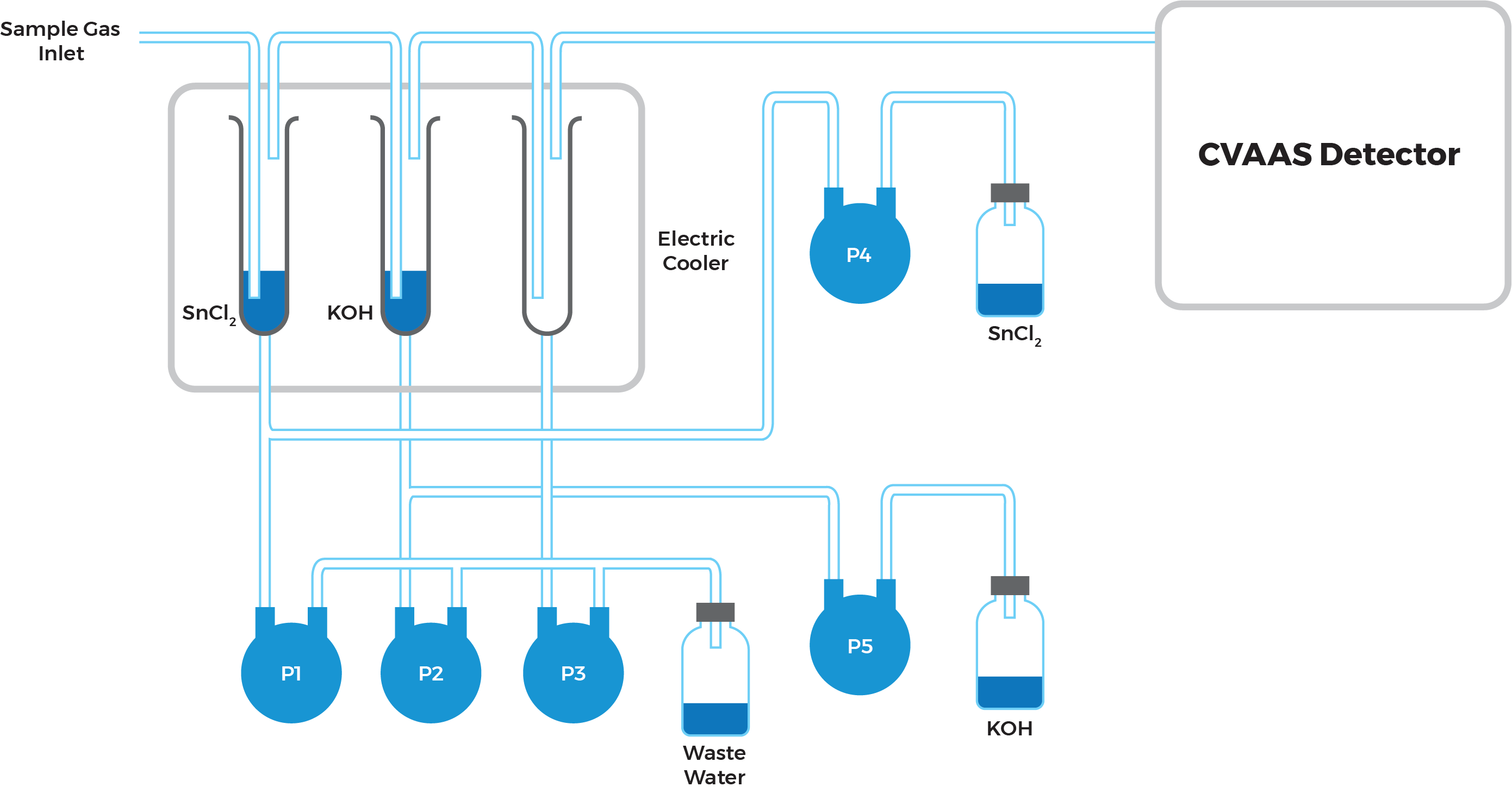
2019
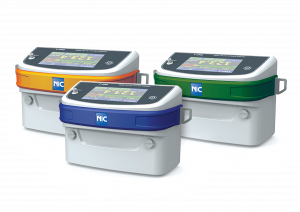
1
New Product(s) Launched:
- Model EMP-3 – 3rd generation EMP-series with improved design and functions
- Model SGM-9 – 2nd generation SGM-series for mercury measurement in stack gas emission
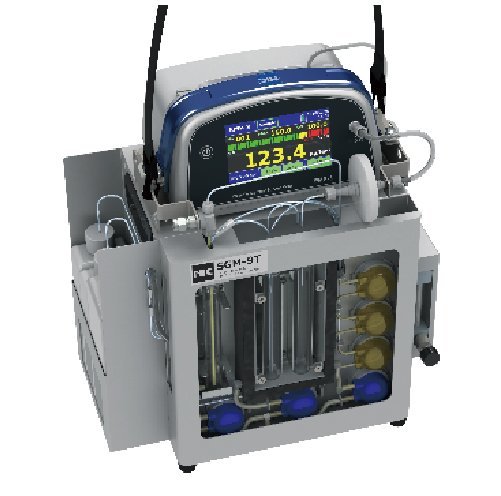
2
2020
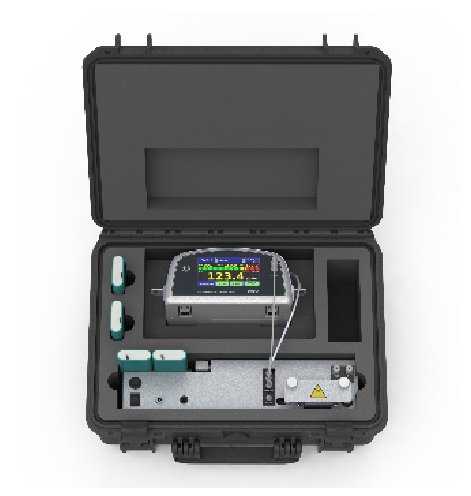
New Product Launched: EMP-Gold+
An improved version of compact field portable battery-operated gold-amalgamation mercury in gas monitor with new 3rd generation of EMP-3 detector
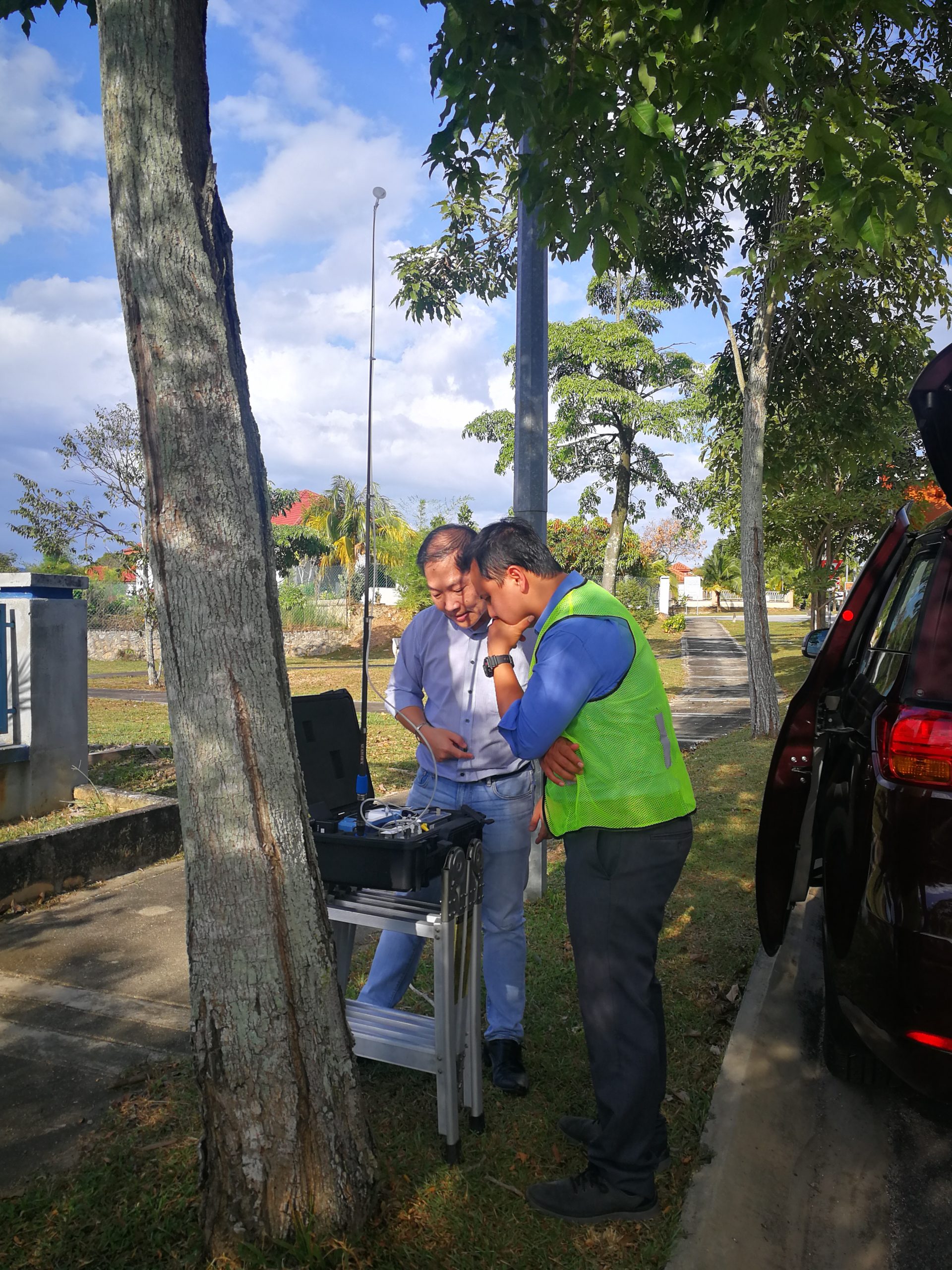
Field Mercury Monitoring using EMP Gold+ with Malaysia atmospheric researcher from Univerisity Kebangsaan Malaysia, Dr Shahrul Nadzir near incinerator area.
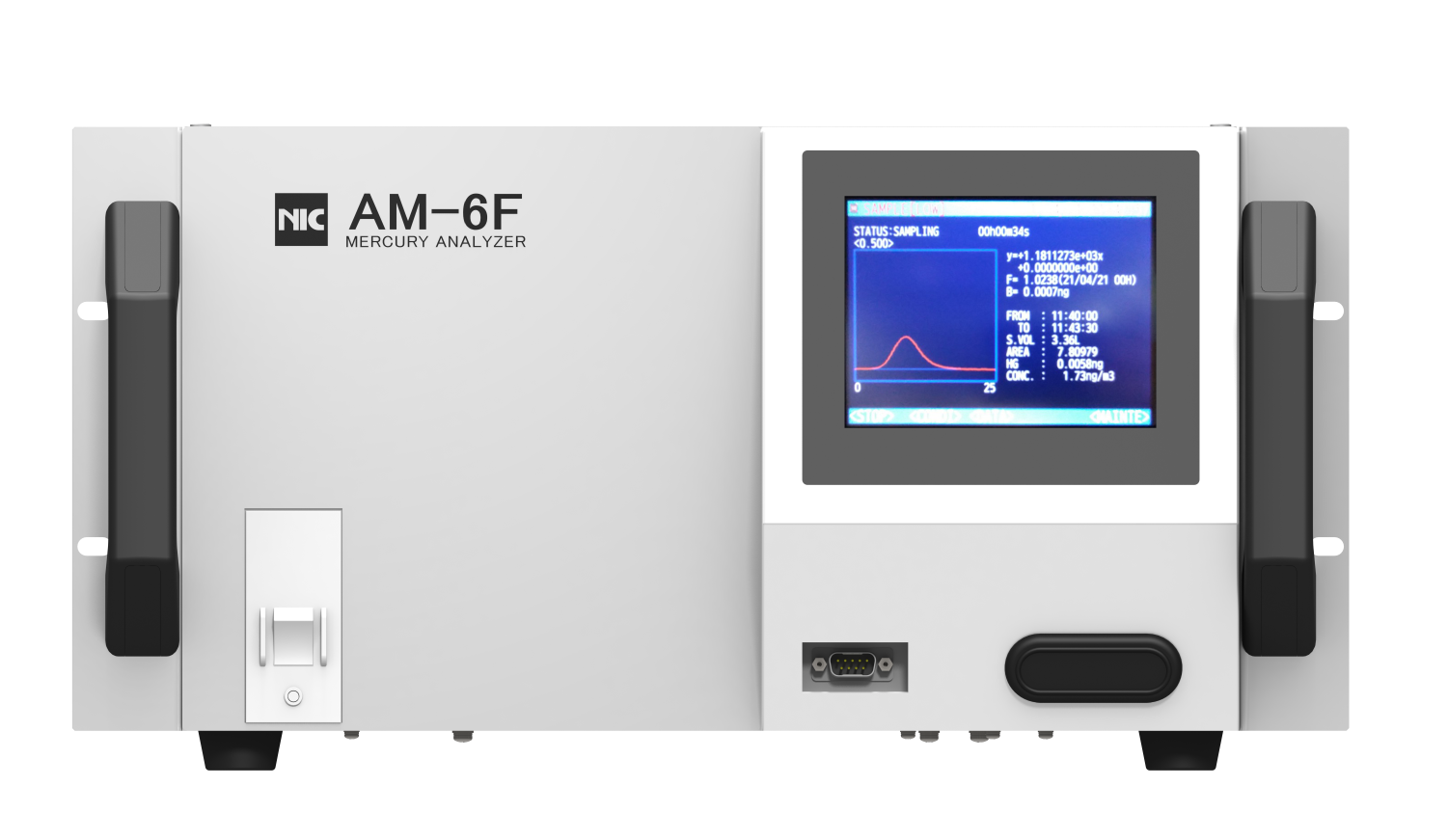
The AM-6F makes its debut
2021
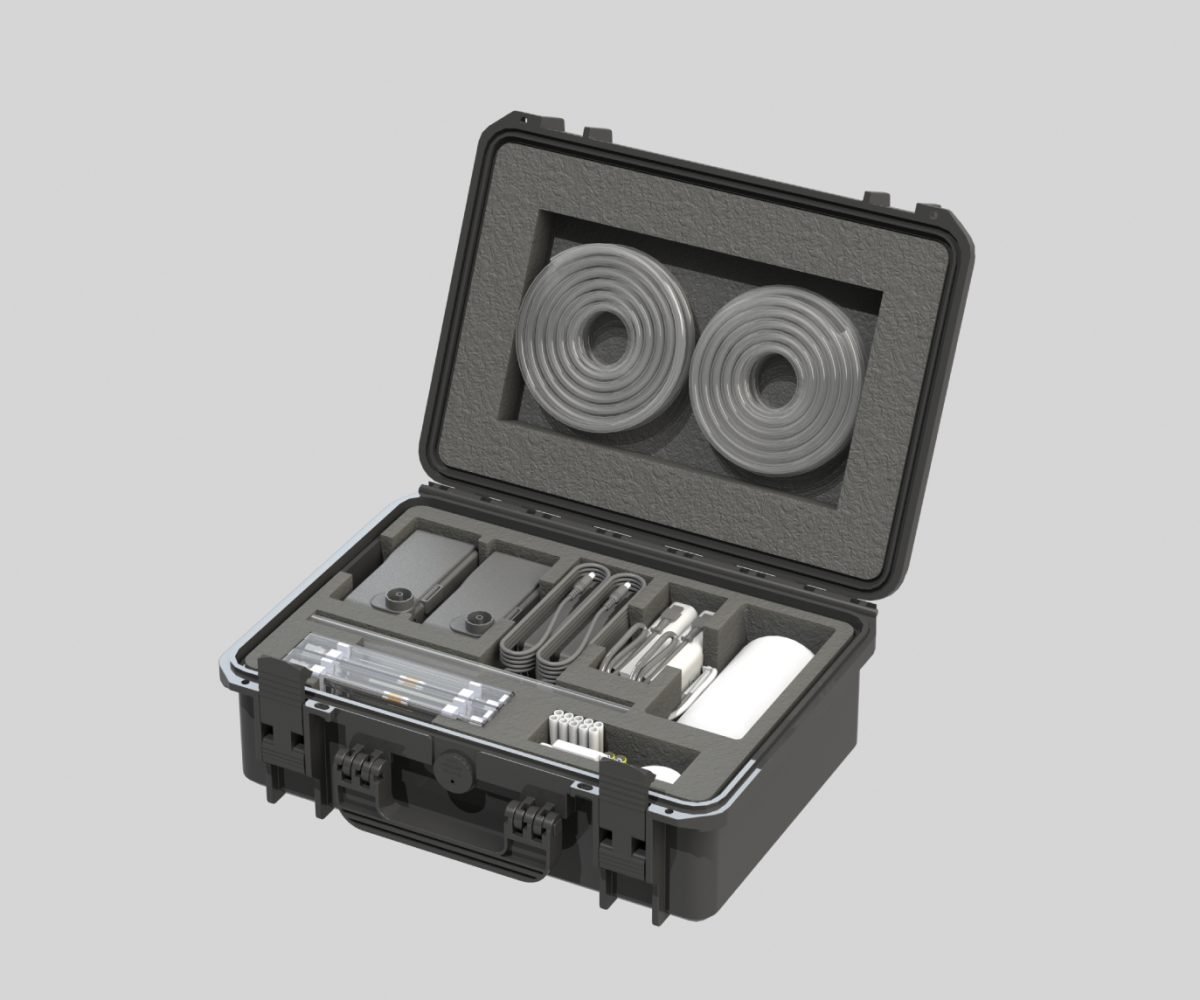
NIC introduces the SK-1000A
A comprehensive manual active sampling kit for Gaseous Elemental Mercury (GEM). Fully equipped with all necessary accessories and a reliable Gold Amalgamation Tube for sampling, it further expands NIC’s innovative product portfolio.
2023
The RA-7000A emerges, a cutting-edge addition to NIC's product line.
With its advanced features and superior performance, it promises to redefine mercury analysis, further strengthening NIC’s position as a leader in the field.
